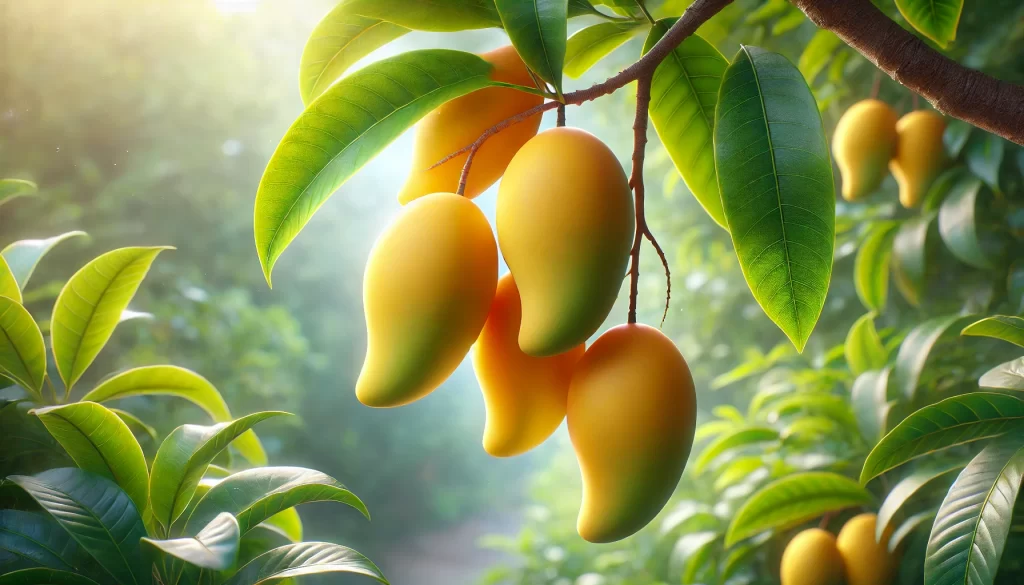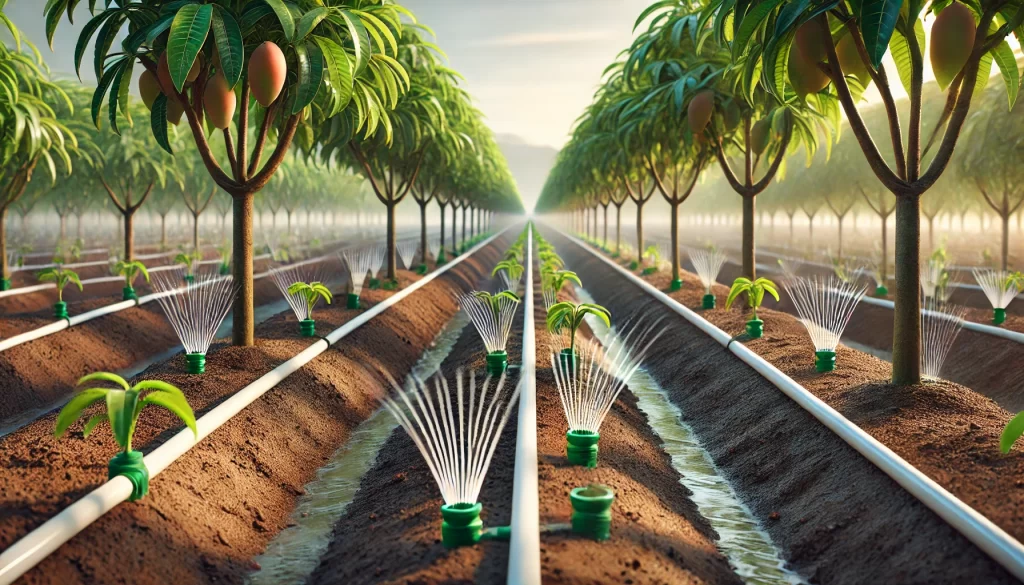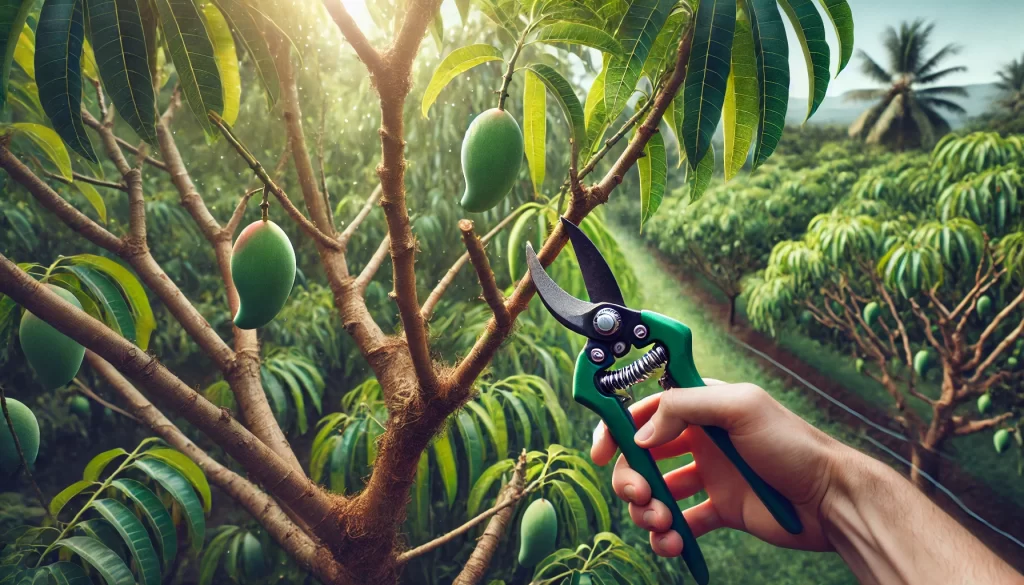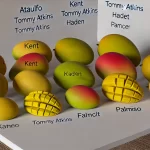Introduction to Ataulfo Mango Cultivation
The Ataulfo mango (Mangifera indica) is one of the most prized mango varieties in Mexico and internationally, known for its sweet taste, fiberless pulp, and small size. Proper management of Ataulfo mango cultivation is essential to obtain high-quality fruits and ensure profitable production. This article offers a comprehensive guide on the management of Ataulfo mango cultivation, from land preparation to harvest and post-harvest handling.

Land Selection and Soil Preparation
Ideal Climatic Conditions
Ataulfo mango thrives in tropical and subtropical climates, with optimal temperatures between 24°C and 30°C. It is sensitive to frost and extreme temperatures, so an area with mild winters should be selected. The ideal annual precipitation is 1,000 to 2,000 mm, with a dry season that favors floral induction.
Soil Selection
Ataulfo mango prefers deep, well-drained soils with good organic matter content. Sandy loam or loam soils with a pH between 5.5 and 7.5 are ideal for its cultivation. It is important to avoid soils with waterlogging problems, as they can affect root development and cause diseases.

Soil Preparation
- Deep Tillage: Perform deep tillage to improve soil structure and facilitate root system development.
- Incorporation of Organic Matter: Add compost or well-decomposed manure to improve soil fertility and water retention capacity.
- Adequate Drainage: Implement an efficient drainage system to prevent waterlogging, which can be detrimental to mango growth.
Planting Ataulfo Mango
Variety Selection
Ataulfo mango is a variety in itself, but it is important to consider selecting appropriate rootstocks compatible with the region’s climatic and soil conditions, in addition to their resistance to diseases.
Propagation Methods
Ataulfo mango is mainly propagated through grafting, which ensures uniform growth and fruit quality. Grafting also allows the selection of rootstocks that offer resistance to certain diseases or adaptability to different soil conditions.

Planting Ataulfo Mangos
- Spacing: A spacing of 8 to 10 meters between trees and 10 to 12 meters between rows is recommended, depending on the rootstock and soil conditions.
- Planting Method: Trees should be planted in prepared holes with organic amendments, ensuring that the graft is above ground level to avoid rot problems.
Irrigation and Water Management
Water Requirements of Ataulfo Mango
Irrigation is essential for the development of Ataulfo mango, especially during the first years of establishment and during the fruit-filling phase. Water needs vary depending on the growth stage:
- Establishment: Moderate and frequent irrigation to ensure good rooting and growth of young trees.
- Vegetative Growth: Maintain consistent irrigation to promote vigorous growth and the formation of productive branches.
- Fruit Development and Filling: Provide abundant irrigation during fruit formation and growth to ensure good size and quality.
Irrigation Systems
- Drip Irrigation: This is the most efficient system for Ataulfo mango cultivation as it delivers water directly to the root zone, minimizing evaporation losses.
- Sprinkler Irrigation: It can be suitable for large areas, but care must be taken to avoid excessive wetting of the foliage, which could favor the onset of diseases.

Fertilization of Ataulfo Mango
Nutritional Requirements
Ataulfo mango is nutrient-demanding, especially nitrogen, phosphorus, and potassium. A well-balanced fertilization plan is essential to ensure vigorous growth and high-quality fruit production.
- Nitrogen (N): Promotes vegetative growth and leaf formation.
- Phosphorus (P): Crucial for root development and flower formation.
- Potassium (K): Enhances fruit quality, disease resistance, and storage capacity.
Fertilization Plan
- Base Fertilization: Apply an NPK mix before sprouting to prepare the soil.
- Top Dressing: Make additional applications of nitrogen and potassium during the growth and fruit formation cycle, adjusting dosages according to soil analysis and tree development.
- Foliar Fertilization: Use foliar applications of micronutrients, such as zinc and boron, to correct specific deficiencies and improve crop performance.

Pest and Disease Management
Common Pests
Pest management is essential to maintain the health of Ataulfo mango trees and ensure the production of high-quality fruits. The most common pests include:
- Fruit Fly (Anastrepha spp.): Affects fruits, causing direct damage and loss of quality.
- Mites: Can cause defoliation and affect fruit production.
Control Strategies
- Regular Monitoring: Regularly inspect trees to detect pests in a timely manner.
- Biological Control: Introduce natural predators such as parasitoid wasps to control pest populations.
- Insecticide Application: Use specific products following technical recommendations to minimize environmental impact and avoid resistance.

Common Diseases
Diseases can significantly affect the productivity of Ataulfo mango. The most common include:
- Anthracnose (Colletotrichum gloeosporioides): Causes black spots on leaves, flowers, and fruits, affecting quality and yield.
- Powdery Mildew: Affects leaves and young shoots, causing a white powdery layer that can reduce photosynthesis.
Control Strategies
- Sanitary Management: Remove affected parts to reduce disease spread.
- Use of Fungicides: Apply preventive and curative fungicides under favorable conditions for disease development.
- Sanitary Pruning: Regularly prune to remove diseased branches and improve air circulation within the tree canopy.

Pruning and Tree Management
Training Pruning
During the first years, it is crucial to perform training pruning to develop a strong and well-distributed tree structure. Pruning should focus on removing poorly positioned, weak, or damaged branches and encouraging the growth of main branches that can support the weight of the fruits.
Maintenance Pruning
Maintenance pruning is performed to remove dead, diseased, or interfering branches with air and light circulation. This practice also helps prevent the proliferation of diseases and facilitates harvesting.
Harvest and Post-Harvest Handling
Maturity Indicators
Ataulfo mango is harvested when the fruits have reached their physiological maturity, which can be determined by:
- Skin Color: The fruit changes from bright green to a characteristic golden yellow.
- Soft Touch: The fruit begins to yield slightly to the touch, indicating it is ready to be harvested.
- Sweet Aroma: A sweet and characteristic aroma emanates from the ripe fruit.

Harvesting Techniques
Harvesting is done manually, cutting the fruits with a knife or scissors, leaving a small stem. It is important to handle the fruits carefully to avoid damage that could reduce their shelf life.
Post-Harvest Handling
Post-harvest handling is crucial to maintaining the freshness and quality of Ataulfo mangoes until they reach the final consumer. Recommended practices include:
- Washing and Sorting: Remove impurities and sort fruits according to size, color, and quality.
- Post-Harvest Treatment: Apply disinfection and temperature management treatments to prevent diseases and prolong shelf life.
- Storage: Keep fruits in a cool place, preferably at a temperature of 12-15°C, to prolong their shelf life.
- Transportation: Transport fruits in ventilated boxes to avoid physical damage and preserve quality during transit to the market.

 AgronoBlog – Agriculture Blog
AgronoBlog – Agriculture Blog 


